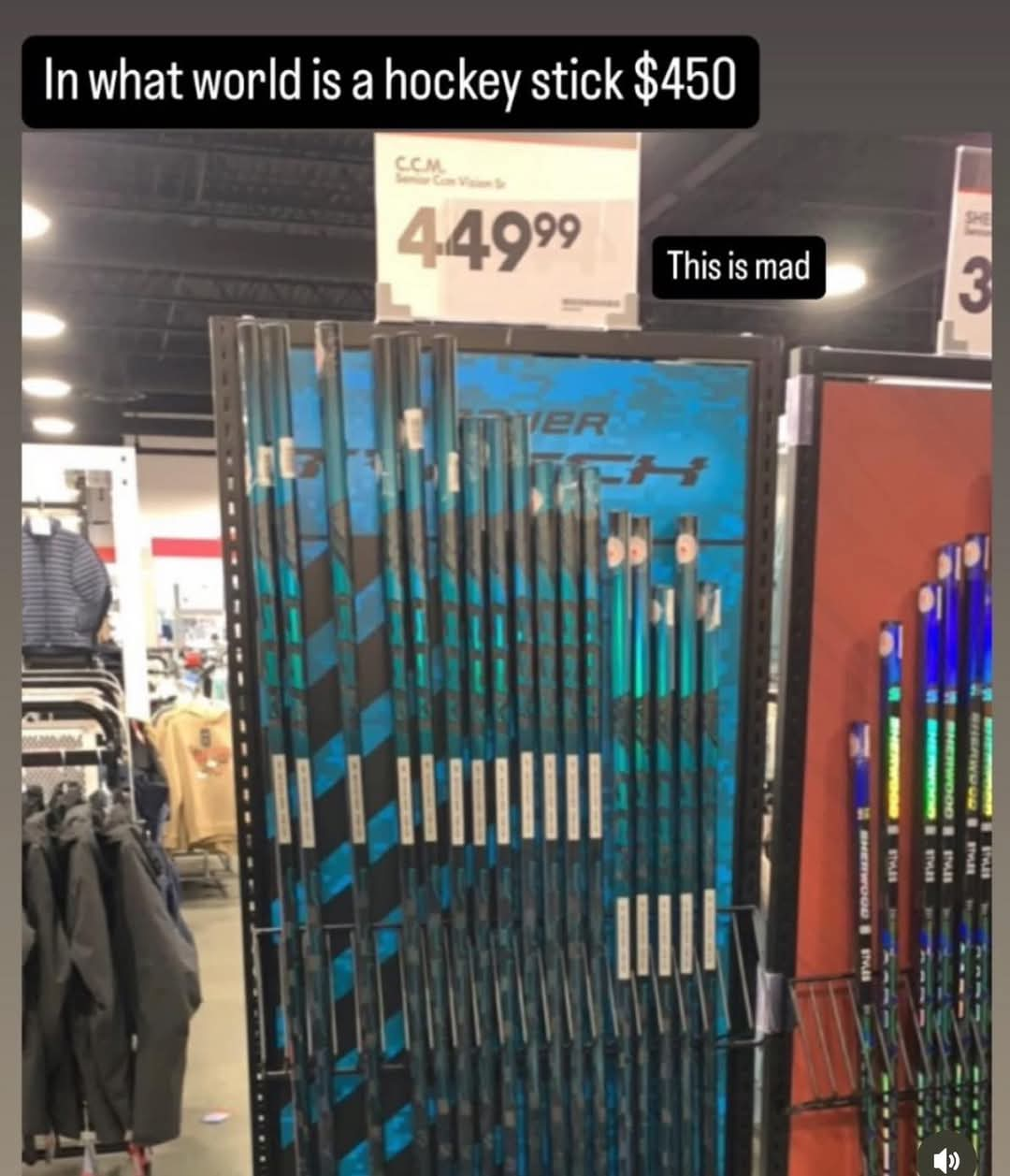Hockey has always been an expensive sport, but in recent years, the cost of equipment has skyrocketed—especially when it comes to sticks. Players at all levels are asking the same question: Why do hockey sticks cost $300–$400? The answer lies in big-brand business models, which prioritize profit over players by using strategies that inflate prices, reduce durability, and create a cycle of constant repurchasing.
Major hockey brands like Bauer, CCM, and Warrior dominate the stick market. These companies operate under a business model that maximizes revenue rather than providing value to players. Here’s how:
1. Private Equity Ownership & Profit Maximization
Many top hockey brands are owned by large private equity firms, whose primary goal is to increase profitability and drive returns for investors—not necessarily to build the best products for players.
- Bauer was previously owned by Peak Achievement Athletics, a private equity-backed firm, and later acquired by another investment firm, Sagard Holdings.
- CCM has changed ownership multiple times, most recently purchased by Altor Equity Partners from Birch Hill Equity Partners. The frequent change in ownership suggests that investment firms see it as a financial asset rather than a brand focused on player needs.
- Warrior is owned by New Balance, a privately held company with global revenue targets.
Frequent ownership changes, particularly in CCM’s case, highlight how these brands are treated as investment opportunities rather than long-term commitments to hockey players. This often leads to aggressive cost-cutting, premium pricing, and short product lifecycles to maximize sales turnover. Players end up paying the price—literally.
2. Planned Obsolescence: Lightweight but Fragile Sticks
Hockey brands justify high prices with claims of cutting-edge materials, “quick release technology,” and ultra-lightweight designs. However, these so-called innovations often come at the cost of durability.
- Thin Carbon Fiber Layers: Reducing weight makes sticks more breakable.
- Short Warranties: Most sticks come with a 30-day warranty—a sign that manufacturers know they won’t last much longer.
These design choices ensure that players break sticks frequently, keeping them in a cycle of constant repurchasing.
3. The Cost of NHL Sponsorships & Marketing
Big brands spend millions on sponsoring NHL stars like Connor McDavid, Auston Matthews, and Sidney Crosby. These endorsements drive sales, but they also significantly inflate the price players pay.
- NHL sponsorship costs are passed on to consumers, increasing the retail price of sticks.
- Brand hype over product value: Instead of investing in durability, brands focus on image, making players feel they “need” the latest model every season.
4. Traditional Distribution Models
Big brands rely on wholesale distribution to hockey retailers, which adds layers of markup:
- Factory Cost: Composite stick production in China costs approximately $30–$60 per stick, depending on materials and labor.
- Wholesale Price: Brands sell to retailers at $150–$200 per stick.
- Retail Markup: Stores then charge players $300–$400 per stick.
5. Post-COVID Impact on Stick Prices
Several economic factors have led to additional price increases:
- Manufacturing Costs in China: Rising wages and material costs have pushed up production prices.
- Shipping & Logistics: Post-COVID supply chain disruptions have increased container shipping costs by up to 300% in some cases.
- Tariffs on Imports: U.S. tariffs on Chinese-made sporting goods may further increase costs, which are passed down to consumers. (to be seen)
These factors contribute to why hockey sticks have become even more expensive in recent years, despite no real advancements in durability.
The Alternative: How Hockey Sticks Can Be More Affordable
Instead of sticking to an outdated, profit-driven model, newer brands can disrupt the industry with direct-to-consumer (DTC) models and more player-focused designs. Here’s how:
1. Eliminating Retail Markups with Direct-to-Consumer (DTC) Sales
Instead of selling through big-box retailers, a DTC model ships sticks directly from the manufacturer to the player. This cuts out unnecessary markups and reduces the final cost.
✅ Lower Prices – No retail markup means savings for the player.
✅ Better Quality – More budget for durable materials instead of marketing hype.
✅ Fair Warranties – Confidence in durability leads to better consumer protection.
2. Building Durable, High-Performance Sticks
A shift towards sustainable and durable materials would mean players buy fewer sticks, saving money in the long run. Solutions include:
- Reinforced Carbon Fiber Layers – Balancing weight and strength.
- Use of alternative fibres – research point to materials with better properties for building sticks
- Extended Warranties – A true sign of durability and confidence in the product.
3. Transparency in Pricing & Manufacturing
New brands should be upfront about production costs and markups, showing players where their money goes. This transparency builds trust and creates a fairer, player-first industry.
The Future of Affordable Hockey Gear: Enter The Hockey Kollektiv
At The Hockey Kollektiv, we believe high performance shouldn’t come at a luxury price. Our mission is to challenge the outdated business models of big brands by offering top-tier gear at a fair price.
✅ Direct-to-Consumer Pricing – No inflated retail markups.
✅ Built for Durability – Engineered to last, saving you money over time.
✅ Sustainable & Fair – No gimmicks, just high-performance gear at the price players deserve.
Ready to Pay Less for Pro-Level Hockey Gear?
Join our movement to make hockey affordable again. Sign up now to get exclusive early access to our pro level hockey sticks at a fraction of the cost.

 using WordPress and
using WordPress and